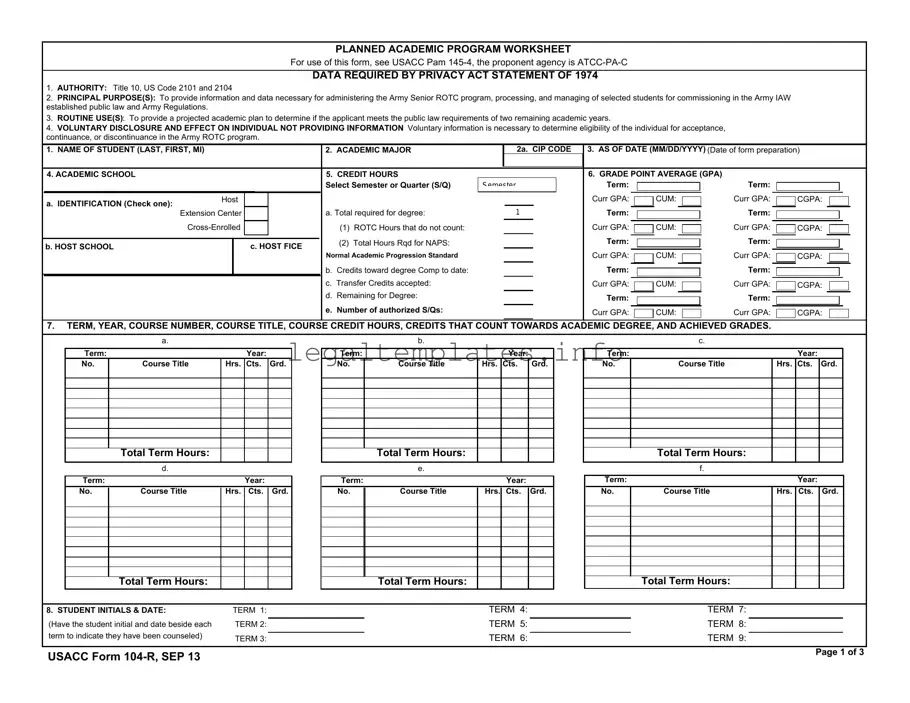Filling out the 104-R form, a crucial step for cadets in the ROTC program, requires meticulous attention to detail. Common errors can easily derail the intended academic and career trajectory of these students, complicating their path to commissioning. One prevalent mistake is providing incorrect personal information, including the misrepresentation of the academic major and corresponding CIP code. This discrepancy may seem minor, but it can lead to confusion regarding the cadet's academic program and its alignment with Army ROTC requirements.
Another area where errors frequently occur is in the detailing of academic credits. Cadets often inaccurately report credit hours, both completed and projected, which can mislead program coordinators about the cadet’s academic standing and progression. This misreporting can be particularly problematic when assessing eligibility and readiness for commissioning within the stipulated timeline. Ensuring accurate and honest representation of credit hours is therefore paramount.
The form requires cadets to specify their grades alongside the courses listed, yet a significant number of submissions contain errors or omissions in this section. Leaving out grades, or inaccurately recording them, affects the calculation of the GPA. Given that maintaining a certain GPA is a critical criterion for continuance in the ROTC program, any inaccuracies in this area can have serious implications for the cadet’s status within the program.
Furthermore, the designation of the academic term and year associated with courses completed or planned also tends to be a source of confusion. Cadets sometimes list courses without specifying the correct term and year, making it challenging to follow their academic progress and verify their compliance with the planned academic program. Precision in detailing the timeline of academic coursework is essential for an unambiguous roadmap to degree completion.
Additionally, a commonly overlooked aspect of the 104-R form is the necessity for student initials and dating beside each term. This step is crucial as it signifies the cadet’s acknowledgment and verification of the information provided. Skipping this step can lead to questions regarding the authenticity and accuracy of the information submitted.
An error that can easily be rectified yet often goes unnoticed is failing to properly indicate whether all listed courses are indeed mandatory for the completion of the degree, as required by Section 9 of the form. Misunderstanding or neglecting this section may result in an incomplete portrayal of the cadet’s academic requirements, potentially overlooking elective courses that are essential for fulfilling degree criteria.
Lastly, signatures and proper dating at the form’s conclusion are imperative yet frequently missed. The lack of these signatures from the cadet, registrar, and examiner of credentials, or other certifying officials, renders the form incomplete and unofficial. This oversight can delay verification processes, affecting the cadet’s timely progression through and completion of the ROTC program.
In conclusion, attention to detail, thorough review, and accuracy in completing the 104-R form are vital steps each cadet must undertake. The implications of errors, while seemingly minor, can have far-reaching effects on a cadet’s academic and military career. As such, it's advisable to approach this task with the seriousness and precision it demands.



